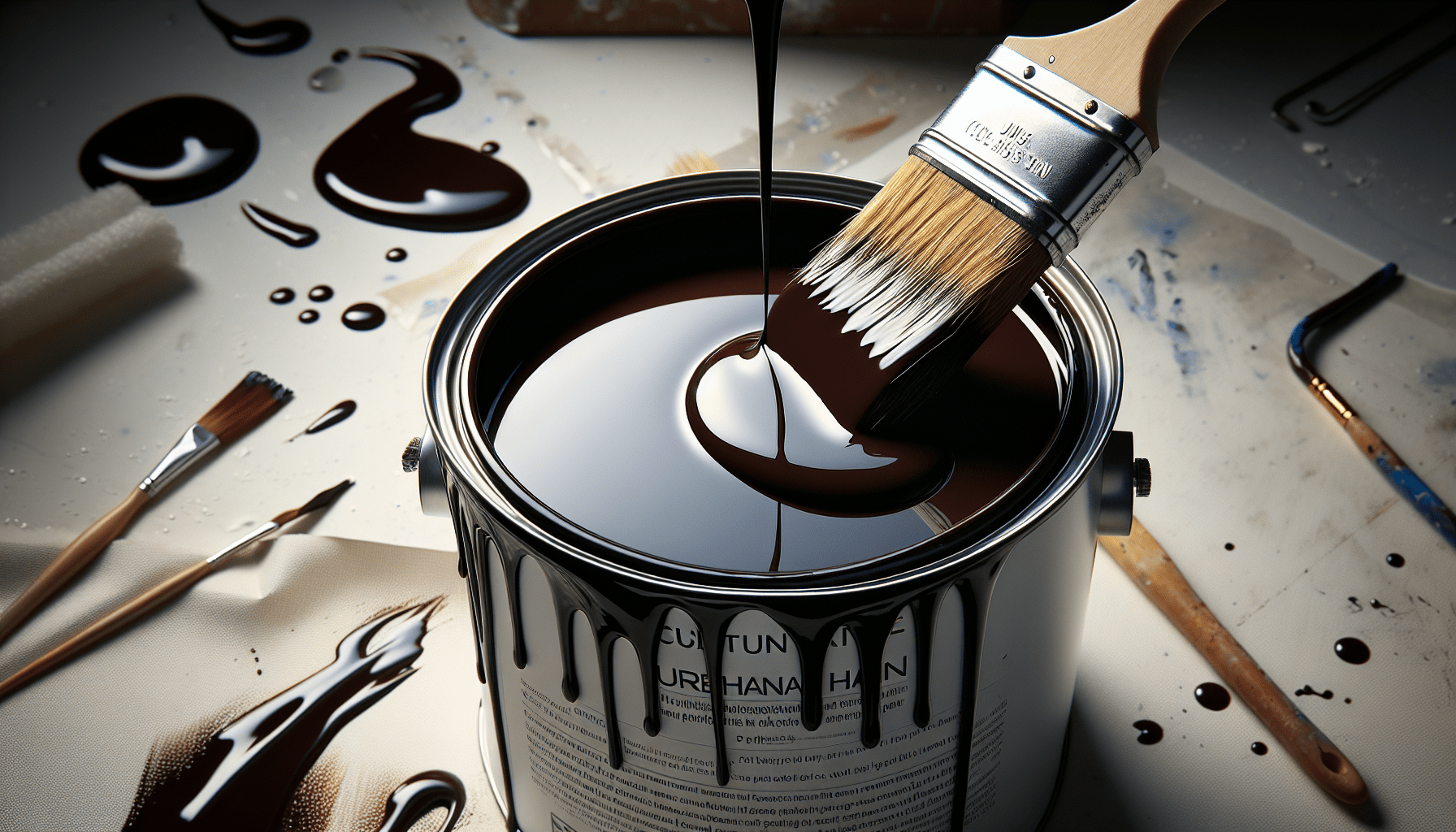In “How To Test For Oil Paint”, you are provided with a comprehensive guide designed to equip you with the precise knowledge required to accurately identify the presence of oil paint. This article breaks down complex procedures into simple steps, helping you understand the crucial aspects related to testing for oil paint. Be it for restoration, conservation, or just personal curiosity, this article serves as your personalized tool towards achieving accurate results.

Visual Inspection
The first avenue for discerning the type of paint you’re dealing with is through a visual inspection. The aim is to identify specific characteristics associated with oil paint.
Check for Glossiness
Start by checking the glossiness of the smooth surface. Oil paints tend to have a glossy sheen due to their rich oil content. The reflective nature of the surface can be observed under a soft-light setting. Please be informed that the sheen can vary depending on the particular oil paint and the mediums mixed with the pigment. It can range from glossy to semi-glossy or even matte.
Look for Brush Strokes
Next, closely examine the paintwork for brush strokes. These are typically identifiable impressions left behind by the artist’s brush. Compared to acrylic or water-based paints that flatten as they dry, oil paint retains brush strokes visibly. This creates a rich texture and depth in the finished artwork, making it easy for a discerning eye to identify it.
Examine Drying Time
Understanding the time taken by the paint to dry can also provide valuable clues about its nature. Oil paint usually takes longer to dry, often up to several days or even weeks, in comparison to acrylics which can dry in less than an hour. Therefore, if the painting was recently completed and it’s still wet, chances are it could be oil paint.
Inspect the Color Saturation
Finally, inspect how saturated the colors are. Oil paints are generally more vibrant and have deeper saturation levels because their binders don’t interfere with the colors of the pigments. This results in stronger, more intense hues that can help you identify oil paints.
Odor Assessment
Another diagnostic tool at your disposal is your sense of smell. The scent of paint can often make the distinction between oil and other kinds.
Sniff for a Chemical Smell
First, try to detect a chemical smell. Fresh oil paint emits a distinct smell that reminds of a fragrance of freshly-stocked art stores. Even when the paint appears dry, it could still carry a faint scent. Be aware though, some artists might use odorless mediums with oil paint, making this test not always foolproof.
Identify Linseed Oil Scent
In particular, oil paint often has a faint scent of linseed oil. This ingredient is commonly used to bind the pigment in the paint. This subtle aroma may linger, serving as a sign that the paint is oil-based.
Solvent Test
A solvent test can be quite revealing and is a relatively easy way to determine if a paint is oil-based.
Apply Rubbing Alcohol
Begin by applying a bit of rubbing alcohol on a cotton swab. Then, gently rub it onto a discreet area of the painting—an out-of-the-way corner or edge is perfect. If the paint comes off onto the cotton swab, you’re likely dealing with acrylic paint. As oil paint isn’t typically soluble in alcohol, it will remain unaffected. However, keep in mind that any varnish or coating on the painting might get affected and always attempt this test judiciously.
Use Mineral Spirits
Alternatively, you can also consider using mineral spirits, another solvent. Similar to alcohol, if the paint is unaffected, it’s likely oil. However, again, caution is advised as harsh solvents may cause unintended damage to the artwork.
Smudge Test
The smudge test can reveal valuable details about the paint sample.
Perform the Rub Test
This simple test involves gently rubbing your finger against the dry paint. If the paint smudges, it could indicate that it is oil paint. The test, however, is not always infallible as certain factors like age and drying time of the oil paint could result in no smudging.
Check for Pigment Transfer
While performing the rub test, also check your fingers for any pigment transfer. Unlike water-based paints, the pigments in oil paint will not dissolve in water and might leave residue on your fingers.

Drying Time Test
Observing the drying time of the paint can be a significant indicator of its type.
Paint on a Test Surface
Begin by painting a small sample of the paint on a test surface. As mentioned earlier, oil paints have a longer drying time as compared to acrylic or water-based paints.
Observe the Drying Period
Monitor the painted sample over the following days. If it remains wet or tacky for a longer period of time, it’s a clear sign that the paint is oil-based.
Water Resistance Test
A water resistance test can also be performed to discern between oil and water-based paints.
Dampen a Cloth or Cotton Swab
Start by dampening a cloth or cotton swab with a small amount of water. Ensure it is not dripping wet, but only moist.
Gently Rub the Painted Surface
Gently rub the moist cloth or swab on the paint surface. Oil paint is water-resistant. Therefore, if the paint does not dissolve or smear then it’s probably oil.
Chemical Reaction Test
A chemical reaction test with common household vinegar can be used to distinguish between oil and other types of paint.
Use a Small Amount of Vinegar
The first step is to dab a small amount of vinegar on a clean cloth or cotton swab.
Observe for Any Reaction
Gently apply it on a hidden portion of the painted surface and observe for any reaction. Vinegar will soften water-based paint but will not affect oil paint, which helps you identify if the paint is oil-based.
Consistency Examination
Examining the consistency of the paint can be useful in the identification process.
Check for Thick or Thin Texture
Oil paint, in general, has a thicker consistency compared to acrylic or water-based paints. It is known for its rich, buttery texture that leaves behind visible brush strokes.
Inspect Separation
Furthermore, after sitting idle for some time, oil paint may show signs of separation with the oil floating on top. If you notice a slick of oil when you open the paint cap, it’s possibly an oil paint.
Paint Removal Test
Performing a paint removal test is another viable way of determining whether you’re dealing with oil paint.
Apply a Small Amount of Solvent
To conduct the test, apply a small amount of solvent like rubbing alcohol or mineral spirits on a cloth or cotton swab.
Use a Cotton Swab or Cloth to Remove the Paint
Gently rub the solvent on an unnoticeable area of the painted surface. If the paint doesn’t come off, you may be dealing with oil, as it is not easily soluble in these solvents.
Consultation with Experts
The results of tests conducted can be suggestive but not fully definitive in identifying oil paint. For a more accurate identification, consider seeking professional advice.
Reach Out to Professional Artists
Reaching out to professional artists can be a valuable way of getting knowledgeable insights. Artists with experience can provide useful opinions on the feel, look, and texture of the paint that could confirm or deny its identity as oil paint.
Contact Art Conservationists
Similarly, contacting art conservatists who are trained in the field of art care and restoration can provide expert advice. With their vast proficiency in dealing with a range of art mediums, they can be a valuable resource in identifying oil paint.
In conclusion, testing for oil paint isn’t a one-step process and may involve a combination of factors including visual, olfactory, tactile, and chemical tests. Despite seeming complex, with keen observation and a little patience, you’ll get to understand the intriguing qualities of oil paint.



